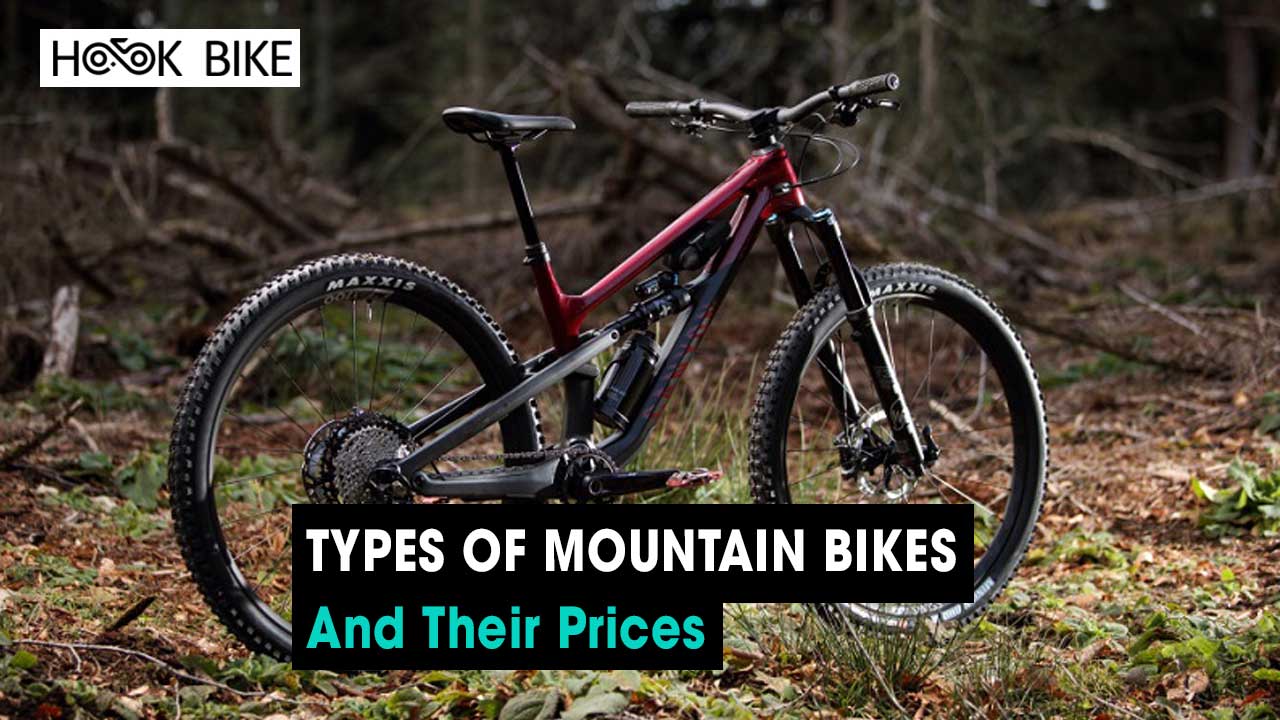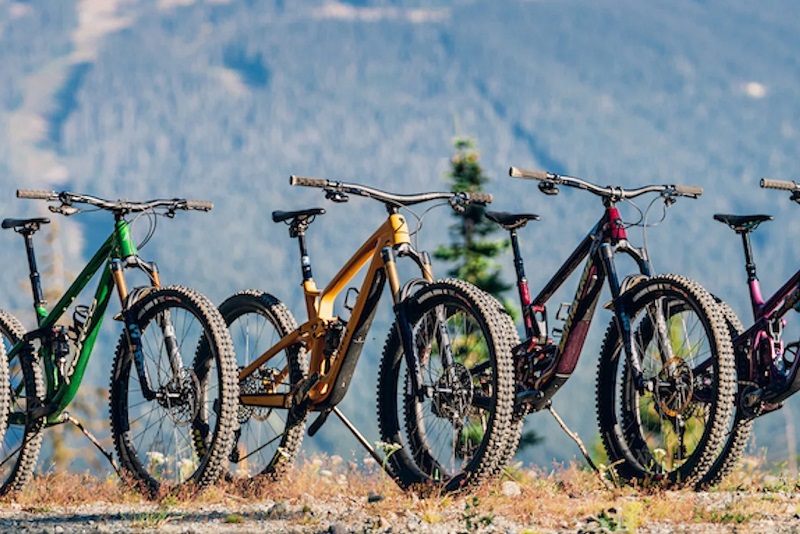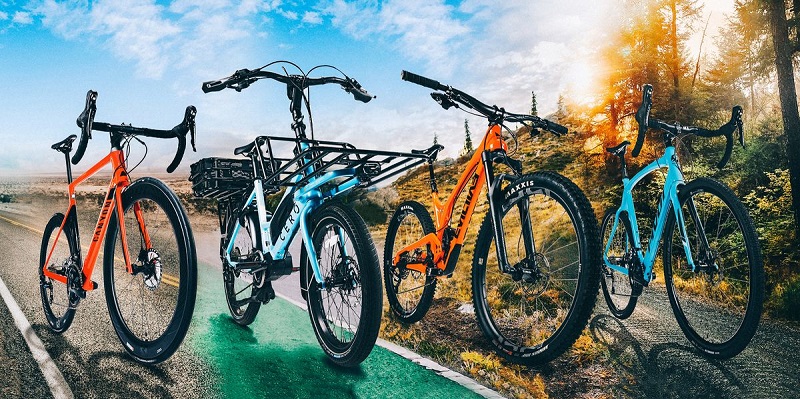Guidance
Types Of Mountain Bikes And Their Prices
Mountain biking is a thrilling sport that offers a mix of speed, challenge, and nature. It’s no wonder that the variety and specialization of mountain bikes have evolved to cater to different styles of riding. Understanding these types of mountain bikes and their associated price ranges can help you find the perfect fit for your biking needs.
The most popular types of mountain bikes
Mountain biking has diversified over the years, leading to the development of specialized bikes for different terrains and riding styles. Here are some of the most popular types of mountain bikes:

1. Cross-Country (XC) Bikes
Estimated Price Range: $500 – $7,000
Cross-Country bikes are designed for speed and efficiency on trails. They are typically lightweight, with a focus on climbing ability. Most XC bikes will have less suspension (around 80mm to 120mm) since they prioritize pedaling efficiency and low weight.
Pros:
Lightweight frame and components
Efficient pedaling
Agile on climbs
Cons:
Less suited for rough terrains
Limited suspension
2. Trail Bikes
Estimated Price Range: $1,000 – $8,000
Trail bikes are the most common type of mountain bike. They are versatile and designed to handle a mix of climbing and descending. Suspension travel usually ranges from 120mm to 150mm.
Pros:
Versatile; good for various terrains
Balanced geometry for climbing and descending
Cons:
Heavier than XC bikes
Not specialized for any one type of terrain
3. All-Mountain/Enduro Bikes
Estimated Price Range: $2,000 – $10,000
All-mountain bikes, also known as enduro bikes, are designed for challenging terrains and significant descents. They often come with more suspension (150mm to 170mm) and a durable build.
Pros:
Durable and robust frame
Excellent suspension for rough trails
Cons:
Heavier than trail and XC bikes
Not as efficient on climbs
4. Downhill/Park Bikes
Estimated Price Range: $3,000 – $12,000
Downhill bikes are built for steep, fast descents. They come with a lot of suspension (up to 220mm) and are typically ridden in areas with lift access.
Pros:
Maximum suspension for tough descents
Durable and robust frame
Cons:
Not designed for climbing
Heavier build
5. Fat Bikes
Estimated Price Range: $500 – $5,000
Fat bikes are known for their oversized tires, which can range from 3.8″ to 5″ or more. They offer exceptional traction and are great for snow, sand, and other soft terrains.
Pros:
Amazing traction in soft terrains
Stable and comfortable ride
Cons:
Slower due to large tires
Can feel cumbersome on regular trails
See more: types of bicycles and their prices
6. Electric Mountain Bikes (eMTB)
Estimated Price Range: $2,500 – $15,000
Electric mountain bikes come with an integrated electric motor that assists your pedaling. They are growing in popularity due to their ability to help riders cover more ground and tackle challenging terrains without getting overly fatigued.
Pros:
Pedal assistance for challenging terrains
Increased riding range
Cons:
Heavier than non-electric counterparts
Higher price point
When selecting a mountain bike, it’s important to consider where and how you’ll be riding. Each type of bike is designed with specific terrains and challenges in mind, so choose one that aligns with your riding preferences and local trails.

Experience in choosing to buy a suitable mountain bike
Choosing the right mountain bike can be an overwhelming experience given the variety of options and technical jargon in the biking world. Here are some steps and considerations to guide you through the process:
Determine Your Budget
Mountain bikes come in a wide range of prices. Set a budget to help narrow down your options.
Remember that you might also need funds for accessories like helmets, gloves, pedals, shoes, and maintenance tools.
Identify Your Riding Style
Are you interested in cross-country, trail riding, enduro, downhill, or another style?
Knowing your intended riding style will help determine the kind of bike you need.

Consider Frame Material
Aluminum: Most common, offers a good balance between weight and cost.
Carbon Fiber: Lighter and can be stiffer but is generally more expensive.
Steel: Durable and has a natural flex but is heavier.
Titanium: Strong and light but expensive.
Suspension
Hardtail: Has suspension in the front only. Generally lighter and requires less maintenance.
Full Suspension: Has both front and rear suspension. Offers a more comfortable ride on rough terrains but might be heavier and more expensive.
Consider the amount of suspension travel appropriate for your riding style.
Wheel Size
27.5-inch (650b): Offers a balance between agility and roll-over ability.
29-inch: Rolls better over obstacles but might be less nimble.
Fat tires: For specific conditions like snow or sand.
Fit
This is crucial. A bike that doesn’t fit well can cause discomfort or injury.
Test ride different sizes. The right size can depend on the brand and model.
Consider getting a professional fitting at a local bike shop.
Gear & Brakes
Think about the number of gears you want. More gears give you more versatility, but the terrain you’ll be riding might not require a wide range.
Disc brakes (hydraulic or mechanical) offer better stopping power, especially in wet conditions.
Future Upgrades
If you’re on a tight budget, consider a bike that you can upgrade later. Components like tires, saddle, and pedals are easy to upgrade and can make a significant difference in ride quality.
Research
Read reviews, watch videos, and join mountain biking forums or local groups to get opinions.
Local riders can provide insights into the best bikes for local trails.

Buy from a Reputable Dealer
They can help with setup, fitting, and future maintenance.
They’ll often offer a free initial tune-up and can answer questions you might have later on.
Test Ride
If possible, test ride multiple bikes. This will give you a feel for differences in geometry, weight, and ride quality.
Consider Other Costs
Maintenance, repairs, and potential upgrades should be kept in mind. Some components might wear out faster based on your riding habits and the terrains you tackle.
The “best” bike is the one that suits your needs, fits you well, and provides you with the most enjoyment on the trails. Don’t be swayed just by brand names or aesthetics. It’s how the bike feels and performs for you that matters the most.
Conclusion: Picking The Right Mountain Bike For Your Needs
When choosing a mountain bike, it’s crucial to consider the type of terrain you’ll be riding most often. Whether you’re looking for speed, versatility, or the ability to tackle the most rugged terrains, there’s a mountain bike out there tailored for your needs. It’s always a good idea to test ride several bikes in your chosen category and consult with experts or enthusiasts to make the most informed decision.
Remember, while price can be an indicator of a bike’s capabilities and features, the most expensive option isn’t always the best fit for every individual. Personal comfort, riding style, and specific needs should always be at the forefront of your decision-making process.

